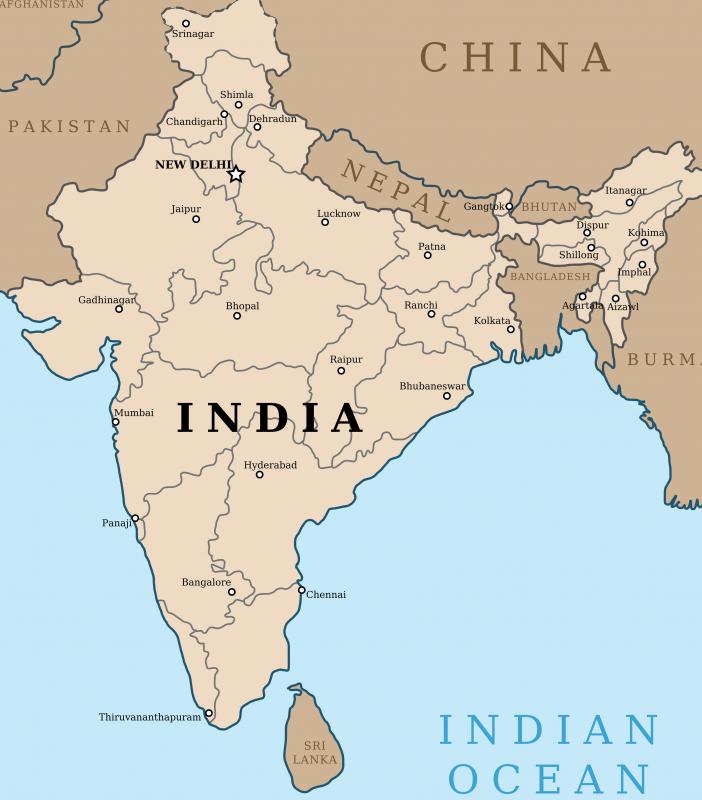At AllThingsNature, we're committed to delivering accurate, trustworthy information. Our expert-authored content is rigorously fact-checked and sourced from credible authorities. Discover how we uphold the highest standards in providing you with reliable knowledge.
What is a Black Panther?
The name black panther is used to describe a variety of species of cats that display a melanism trait, which makes them black. A black panther is not a separate species, but rather a regular jaguar or leopard that carries this genetic mutation. Most do not know that “black panther” and “black leopard” are used interchangeably in zoological terms. The term Panther is the genus name that includes a group of the Felidae family. This family includes big cats and domestic house cats, as well as many others.
In different parts of the world, the term panther is used to describe different types of big cats. North Americans are referring to a puma when they use the word panther, but South Americans use it to describe a jaguar. Throughout the rest of the world, specifically Asia and Africa, where black leopards dwell, black panther can be used to describe the leopards as well. Historically, the term panther only referred to cats with long tails, but it has since been adopted to describe basically any large, all-black cat.

What makes a black leopard, black jaguar or black puma a black panther is a gene mutation. In leopards, the gene is a recessive one, whereas in jaguars, it is dominant. The gene causes an excess of black pigmentation called melanin, which colors the fur completely black. Interestingly, the black panther still has all of the typical markings of a non-melanistic cat, but they are obscured by the black.
Not all cubs born in a litter will have the mutated gene and turn out black. Scientists believe that the gene mutation arose because it provides the black panther living in dense jungles and forested areas the advantage of added camouflage.

The habitat of the black leopard ranges from China, Nepal, Burma and southern India to the southern region of the Malay Peninsula, Africa and Ethiopia. Black leopards are most commonly found in captivity due to their beauty. Their coats have been compared to printed silk for their tone on tone pattern. Both leopards and jaguars are great hunters that can hunt prey weighing more than 1,350 pounds (612 kilograms). Due to the heavy inbreeding of black leopards for the melanism trait, they tend to be more highly strung and temperamental than regular leopards.
Black jaguars are found in South America. They can be distinguished from the black leopard by their larger, spotted rosette markings. They also tend to be thicker and stockier than leopards, with larger heads and thicker forelimbs.
Both types of black panther can be diurnal hunters, which mean they hunt both day and night, but they tend to hunt nocturnally when living close to human settlements. They are great climbers, and where their prey includes monkeys, a black panther can hunt on lower limbs of trees. Black panthers are also known for their ability to carry large prey up into the limbs of trees to protect it from other carnivores.
With no interference from man, leopards are highly successful cats due to their large range base and varied prey, which ranges from small mammals and lizards to cattle, horses and deer. Although they compete with other large cats for prey, their only real physical threat is man, due to hunting for their prized fur and deforestation or loss of habitat.
Frequently Asked Questions
What exactly is a black panther?
A black panther is not a distinct species but rather a color variant of any big cat species. According to the Panthera organization, the term most commonly refers to melanistic (dark-colored) individuals of species like leopards in Asia and Africa, and jaguars in the Americas. Their unique coloration is due to a genetic mutation that results in excess melanin.
Can black panthers be found in the wild?
Yes, black panthers can be found in the wild, although they are less common than their normally colored counterparts. They inhabit dense forests where their dark fur provides camouflage in the shaded understory. Sightings have been reported in various locations, but they are elusive, making exact population numbers difficult to determine.
Are black panthers a separate species from leopards and jaguars?
No, black panthers are not a separate species. They are simply leopards or jaguars with a melanistic color variation. This means that a black panther can be either a leopard (Panthera pardus) in Africa or Asia, or a jaguar (Panthera onca) in the Americas, as per the World Wildlife Fund's species classifications.
How does melanism occur in big cats like black panthers?
Melanism in big cats is a result of a genetic mutation that leads to a surplus of melanin, the pigment responsible for dark coloration. This mutation is inherited in an autosomal dominant fashion, meaning that only one copy of the mutated gene is needed for the trait to be expressed, as explained by genetic studies on these animals.
Is the behavior of black panthers different from that of their normally colored counterparts?
The behavior of black panthers is not significantly different from that of their normally colored counterparts. They share the same hunting techniques, territorial behaviors, and social structures. The primary difference lies in their coloration, which may give them an advantage in certain environments, such as dense forests with low light.
How rare are black panthers, and are they protected?
Black panthers are relatively rare due to the specific genetic mutation required for melanism to occur. Their rarity varies by region and species. Many black panthers, as part of their respective species of leopards or jaguars, are protected under various conservation statuses. For instance, the International Union for Conservation of Nature (IUCN) lists leopards as vulnerable and jaguars as near threatened, highlighting the importance of conservation efforts for these big cats.
AS FEATURED ON:
AS FEATURED ON:












Discussion Comments
there are a few in Washington that i know of, but it's a rare sight.
There might be wild black jaguars in North America but it is not its natural habitat.
The black leopard actually has a very dark brown colored coat with the same rosettes as the rusty-brown colored cats. their spots are black.
So there are no wild black jaguars at all in north America?
Post your comments